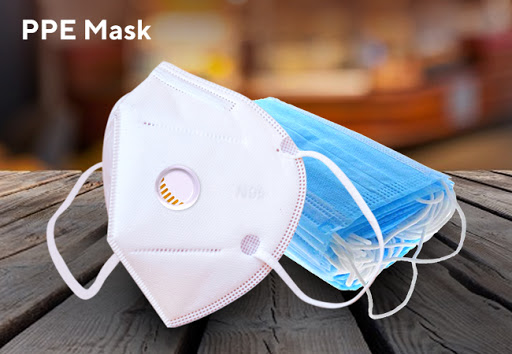The only thing certain about this pandemic is that we have to get used to wearing masks for the foreseeable future. Until there is a vaccine for COVID-19, the best way to protect yourself and others is by wearing a mask. This means it is important to understand the different types of masks in the market so that you pick the right one for your needs. There is a heated debate about face masks and its effectiveness. The use of face masks is highly encouraged by all countries around the world and this is why it is best to know about different types of face masks available and how they differ from one another. Before you buy a face mask, it helps to know what you are buying and how it will help you.
Let us discuss the different types of masks in the market including the FFP3 mask and FFP2 mask, non-medical fabric masks and surgical face mask. Listed below are the main types of masks available today.
•
Fabric
hygiene masks for non-medical use
•
Surgical
masks
•
PPE
masks (FFP1, FFP2, and FFP3 masks)
•
N95 and
KN95 masks
•
Filtering
masks
Fabric hygiene masks for non-medical use
The best feature of fabric masks is that they are washable and re-usable. They are ideal for non-medical use and are not certified. There was a time when there was a huge demand for masks but the supply was scarce. This is when a lot of firms converted their production lines to manufacture hygiene masks. The mask will cover your mouth and nose but you also need to maintain a distance of at least two meters from others even when wearing the mask. The mask is not a medical-grade but will help prevent the spread of the virus. It will filter out most droplets expelled from the mouth and nose.
Many countries recommend people to wear some sort of protection even if it is non-medical grade. It is a low form of protection that will work as a barrier against the spread of the virus. It will also reduce the waste associated with disposable masks and gloves.
Surgical masks
Surgical masks are more effective than fabric masks. They are commonly used and are available in blue color. They protect patients from potential contact with viruses and bacteria exhaled by the wearer. These masks filter the air expelled from the mouth and nose. It has a filtration efficiency of 95% and is considered ideal for limiting the spread of saliva droplets that are expelled when you talk, sneeze or cough.
Surgical masks are used by medical professionals as they are
ideal for preventing the spread of the virus through the air. It is important
to follow social distancing when wearing the mask. The mask should fit well and
it must completely cover the mouth and nose. They are only for single-use and
should be thrown away after about four hours of use.
PPE masks (FFP1, FFP2, and FFP3 masks)
PPE (personal protective equipment) is worn by medical staff in the hospitals and it provides a very high filtration level. It is much more efficient when it comes to filtering for inhaled and exhaled air than surgical masks. FFP means filtering facepiece and it shows that the mask has met the EN 149-2001 standard. It is the minimum performance criteria for structural stability, breath-ability, biocompatibility, and efficiency. FFP has a numbering system that shows the filtration efficiency of the devices.
An FFP1 mask has a limited filtering capacity and will only filter out large particles. They are not suitable for protecting the wearer from harmful microparticles which carry the virus. FFP2 has a slightly higher filtration efficiency for airborne particles which is around 92% and FFP3 has 98%. The most effective masks are valveless FFP2 and FFP3 masks because they offer maximum protection for the wearer and others. A valve will expel the wearer’s exhaled air without filtering it which is why it is not recommended by those who have symptoms.
The drawback of the FFP3 mask is that it has a high level of
filtering and layering which makes the wearer uncomfortable when worn for a
long period of time. The mask also has a limited lifespan and they are designed
to provide protection for six hours, after which they need to be disposed of.
N95 and KN95 masks
N95 and KN95
masks are similar to FFP2 make and they offer a high level of protection to
medical professionals. These ratings of N95 with respirator and KN95 with respirator are certified to Chinese and American standards which are
similar but not the same as European mask standards. For the efficiency of the respirator,
they need to carry the CE mark. It means that the mask has been tested for
efficiency and meets the EU standards. Hence, if the mask has a CE mark, its
efficiency is equal to FFP2 masks.
Filtering masks
The filtering mask has high comfort and filtration efficiency and is manufactured with the latest technology. It is reusable and is made out of three fabrics. The mask provides 95% filtration efficiency for fine particles and bacteria. The three layers form a mechanical barrier against the microparticles and protect the wearer and those around them. It has replaceable filters that last 12 hours and is a dust protector.
After wearing the mask for 12 hours, you do not need to replace the mask but replace the filter. The mask can be washed in warm water with soap. It is available in different colors and patterns and offers a high level of protection. It has a long life and reduces waste associated with single-use masks.
For more information visit www.rhysley.org or send an email to sales@rhysley.org.







